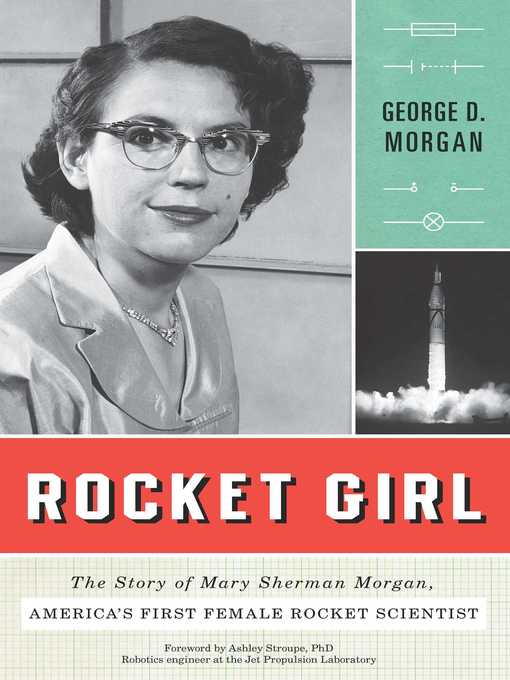
Rocket Girl
The Story of Mary Sherman Morgan, America's First Female Rocket Scientist
فرمت کتاب
ebook
تاریخ انتشار
2013
نویسنده
Ashley Stroupe, PHD, Phdناشر
Prometheusشابک
9781616147402
کتاب های مرتبط
- اطلاعات
- نقد و بررسی
- دیدگاه کاربران
نقد و بررسی

April 15, 2013
Playwright George Morgan (Second to Die) knew that his mother, Mary Sherman Morgan, had done important work as a rocket scientist for the U.S. during the Cold War, but it wasn’t until her funeral in 2004 that he began to understand the extent of her contributions. At the service, a man who had worked with Mary told George that she had “single-handedly saved America’s space program... and nobody knows it but a handful of old men.” In addition to being a very private person, Mary was further constrained by the top-secret status of her projects. She kept such a low profile that when famed German scientist Wernher von Braun wrote to her, he addressed the letter to a “Dear Unknown Lady.” In the early 1950s, Morgan—with only a high school diploma—was the sole female analyst among 900 rocket scientists at North American Aviation. If it weren’t for her invention of the propellant hydyne, America’s first satellite would’ve never made it off the ground. Based on a play of the same name that Morgan put on in 2008, this portrait of a mother shrouded in mystery and largely forgotten by the field she pioneered is a compelling read, though folks looking for a more objective biography might be put off by Morgan’s dramatic flourishes and the lack of critical distance between author and subject. Agent: Deborah Ritchken, the Marsal Lyon Literary Agency.

June 1, 2013
Morgan (playwright in residence, Cal Tech) is the son of rocket scientist Mary Sherman Morgan (1921-2004). Here he recounts the role she played in enabling the rocket launch that carried America's first satellite into space in 1958. She is credited with inventing Hydyne, the liquid fuel used to lift Explorer 1 into orbit. The strength of this biography rests in how the author contextualizes his mother's story within the better-known one of Wernher von Braun during NASA's early days. This is an accessible and enjoyable read, covering Mary Sherman Morgan's young life in North Dakota through her career working as a chemist for North American Aviation. Morgan initially told his mother's story in a play of the same title; his playwriting skills are evident here. Unfortunately, given his mother's preference for privacy, as well as the secrecy surrounding early rocket projects, plus a dearth of archival sources, the author turns to dramatizing some of his narrative with fictionalized dialog. VERDICT The scarcity of documentation raises questions about historical accuracy here, circumstances that detract from the work but remind us of the need to record and credit adequately the contributions of women scientists, like Morgan, to obtain the fullest account in our history of science collections. Recommended.--Faye Chadwell, Oregon State Univ. Lib., Corvallis
Copyright 2013 Library Journal, LLC Used with permission.

June 1, 2013
Rocket Girl is an intriguing biography of a woman who kept many secrets, the least of which was her part in crafting the rocket-fuel recipe for the satellite Explorer 1. She had a bitter and brutal childhood, put a child up for adoption, and was unpaid for many years for the dangerous work she did in a male-dominated field. Most of all, as her son, author Morgan, recalls, there was something not quite right about her. Call it depression or OCD or just years of suppressed emotion, but Mary Sherman Morgan was not a happy woman. Determined to explore her complicated past, Morgan first wrote a play and then, delving into more detail, this portrait. The narrative is a bit unwieldy in its jumping back and forth in time and in Morgan's attempts to enter the minds of Wernher von Braun and Sergei Korolev, and many questions remain unanswered. Still, the personal story and family detective work are truly gripping, and Mary, in all her contradictions, emerges as a fascinating subject.(Reprinted with permission of Booklist, copyright 2013, American Library Association.)

























دیدگاه کاربران